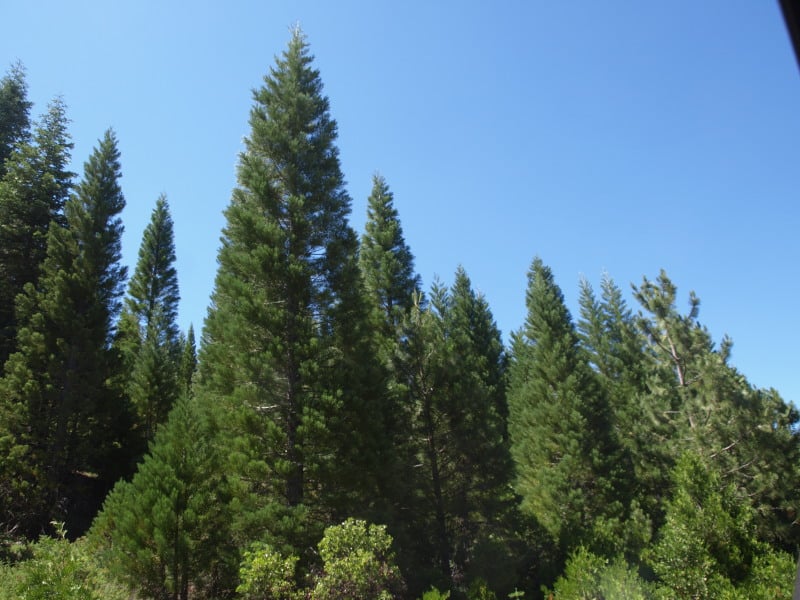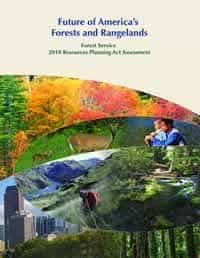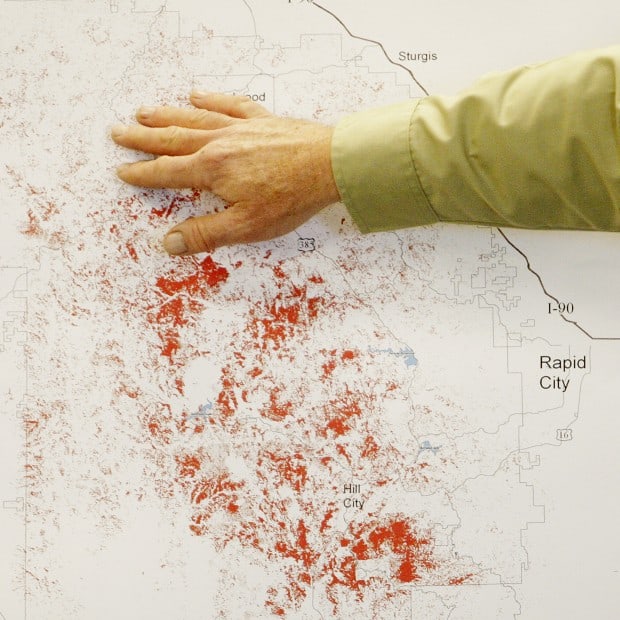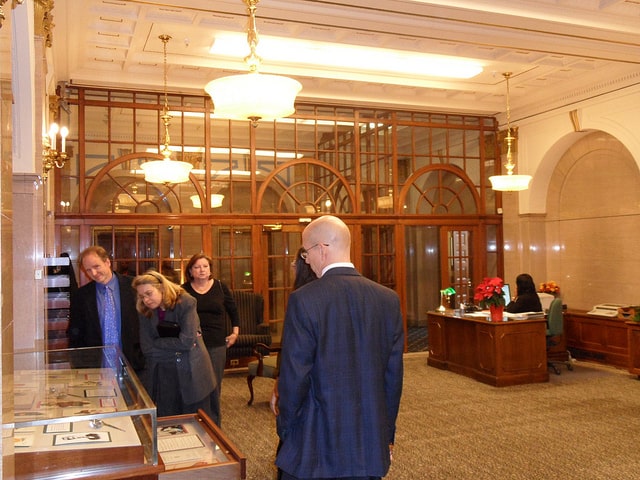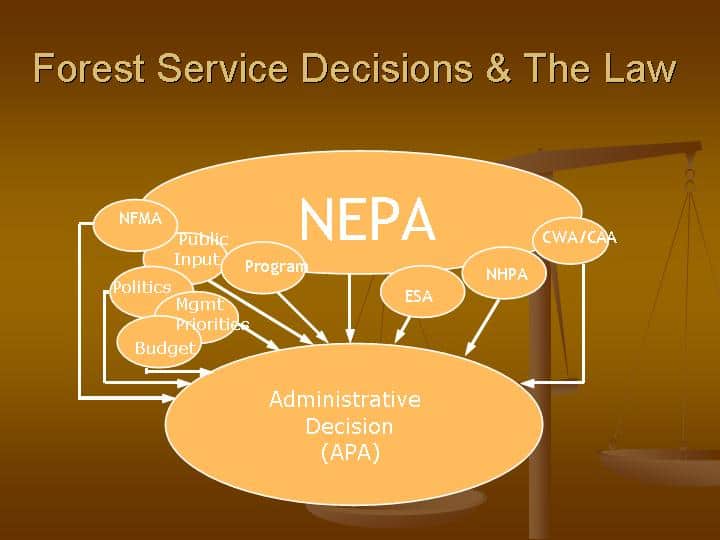“Sharon, I’ve heard from my staff that you have passion, knowledge about and great personal experience with our National Forests. I’ve brought you in for this discussion because I, too, care, about them deeply, and I’m interested in your perspective. I’m looking for advice. I understand that the Forest Service is only one piece of what the USDA does, but it’s a very important piece. I believe that our public lands, in one way or another, touch the soul of each American. If you were sitting in my chair, what would you do differently?”
When I thought about it, I had a broad range of imaginative policy ideas. But when I visualized it, something else entirely came up. The right brain and the heart have their own voice.
“Mr. Secretary, I think the most important thing you can do in the President’s second term is.. I hate to sounds like Moses (just call me Moishe Friedman).. but let my people (Forest Service employees, or former people) go! I mean, in my opinion, you need to let up on the reins in a couple of areas, or otherwise, just arrange to move the Forest Service to Interior.
A long time ago, in a Region far, far away, I worked at a Forest Service nursery where there were Wage Grade and GS folks working. They were always comparing notes about the pros and cons about being one or the other. This is basic human nature. If you diverge too much in treating Forest Service employees from the way that BLM or FWS or Park Service folks are treated, people are going to compare notes. And when things have a tendency to be worse for the Forest Service, the result is not going to be good for morale.
Diversity
Now, the Chief may have told you, but there aren’t that many diverse folks in the natural resource professions. You must know this as you picked the current Chief, Tom Tidwell, Harris Sherman, Jay Jensen, and Butch Blazer, and I’m sure you looked around. At the same time, when you run the numbers, you also need to look at women. We tend to be a smaller percentage than men of any ethnic group in natural resources, and a smaller percentage of veterans (less than what you would expect, which would be 50%). So if you and others are not careful, you could end up being diverse in many ways, but not with women,which I think is very important for a variety of reasons. If all you’ve done is increase the diversity of complexions of folks who discuss elk or turkey hunting at the morning staff meeting, have you really diversified?
When I retired, I worked for a black man, who worked for a Hispanic man, who worked for a white man (the Chief) who worked for a white man (Harris) who worked for another white man (you) who worked for a black man (the President) helped by a white man (the vice-president). All I could see is an unbroken linkage of testosterone molecules from me to President Obama. Even the President is having trouble with the Cabinet, as in this Denver Post story, so I get it. So I think you need to keep this in mind as you fill positions and look at your agencies filling positions. But enough on that.
The Forest Service is looking for the same kinds of folks that BLM and FWS are. If you want to diversify the Forest Service, it’s gotta look like at least as good a place to work, or a better place. As they say, it should be an “employer of choice.”
But some of the current efforts, to some of us, look both draconian and silly at the same time. I know your heart is in the right place, but the systems don’t exist in some cases, to get you’re the results you want, and in actuality it looks like a Dilbert cartoon out there. “Hire diverse people but you have no way of knowing if they are and you will get in trouble if you don’t.” “We have targets but we can’t tell you what they are or write down what they are because we know we’re not supposed to have them.”
Like I said, I know your heart is in the right place. So here’s what I’d do instead. I’d get a diverse panel of young leaders, tell them to work with the schools that produce people with qualifications we need, and give them 2 months to come up with a plan. I’d ask them to identify administrative barriers that need to be removed. I’d publish the plan and vet it online with comments from the rank and file. Then I’d work the plan. I might even go in with the other natural resource agencies on a plan, to maximize the taxpayer bang for the buck.
Travel
Again, the reductions in the Forest Service appear to be much more draconian than fellow natural resource agencies. What’s up with that? In any large organization, the top of the food chain doesn’t get into the weeds of how to manage subordinates’ budgets. If the USFS needed to save X millions of dollars annually, it would have made sense to identify the amount of savings and then say to the Chief, go forth and cut your spending. Instead, you specifically targeted travel after the agency had been reducing on its own for the previous three or more years, the end result is that some important work isn’t getting done because of the constraint, in some cases employee safety is being compromised, and it disproportionately punishes units that were proactive in reducing travel costs before the current quest for reductions. Somehow I don’t think Homeland Security can’t go get terrorists because of their “travel cap” (yes, I know they’re not a natural resource agency, but you get the point).
So maybe “work” needs to be defined differently and separated from meetings. One of the problems is that perhaps some people go to too many meetings, but the draconian aspect of this policy has cut into people’s ability to: develop relationships with their peers and potential partners, provide oversight for how federal funds are spent, and mentoring of younger employees by older employees, professional development, and membership in professional societies.
I brought a copy of Mike Dombeck’s 1999 letter on professional societies (attached to this post as Professional Society Letter. Take a look. All of the things in that letter are still true. It seems like the travel cap has had an impact on people’s participation in keeping up their professional credentials, both meetings and training. It’s extremely demoralizing for our employees, makes the FS an employer “to avoid” rather than “of choice” and keeps the taxpayer from having the best professional advice in an era when we write in regulation that the agency needs to look at the “best available science.”
Now I realize that you are just setting general direction, and people can and do, possibly, interpret things differently down the food chain. In my opinion, the best thing that you could possibly do 1) set up a group to examine why USDA travel policies appear to be different from other federal agencies,
And 2) ask the Chief to update Mike Dombeck’s letter. and clarify that professional development is still encouraged.
Communication
The election is over. You have a second term. So just lighten up! If people don’t get to tell their story, the public can’t make good decisions about their public lands. Sure, sometimes there will be screwups in a large organization. But there are enormously talented, hardworking, public servants out there. Just let them do their job, and if some do it wrong, hold them accountable. What you are saying implicitly, when you hold the reins as tight as they have been, is that you don’t trust them to do their job. Bad, bad, bad for morale. Bad for the public. It’s just all around bad. You might even ask previous administrations for tricks of the trade in communicating in a decentralized organization without going wildly awry. It seemed to me before I retired that it was worse than previous administrations. Part of that might be the growth of social media but it seems to me that can be an advantage if you trust your people.. more ways to get the story out.
Like I said, I know your heart is in the right place, and I think you could do a lot for morale just by setting up groups to look at these two things (travel and diversity) compare us to other agencies, find the best ways, reduce the Dilbertiana, and let the communicators communicate (with guidelines, of course).
Thank you so much for this chance to chat. I hope you take my suggestions in the spirit in which they are offered. I believe that if you and the FS are working better together, you can get much farther down the road in the President’s direction.
I’d like to thank the two employees and one retiree who helped edit and provided feedback on this visualization. If you disagree with the points I made, or have other ideas, please comment!
